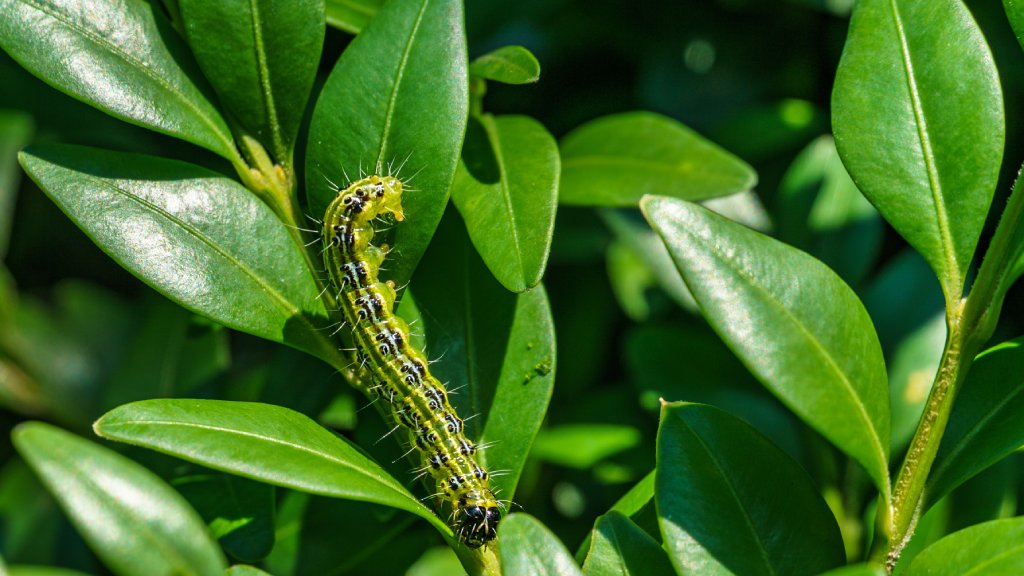Shrub Diseases And Pests To Watch Out For
Shrub diseases and pests can be challenging. Learn how to recognize and eradicate them before they can present a danger to your plants.


Shrub pests and diseases are common problems among landscape plants. Prevention is always the best course of action so manage your plants wisely with proper watering, fertilizing, and pruning. Nevertheless, pests and diseases may find your shrubs. Learn more about the dangers facing your plants.
Common Shrub Diseases And Pests
No matter how diligent you are, there are times when pests and diseases will show up on your shrubs. Forewarned is forearmed, so it helps to learn about common problems and their solutions.
Pests and diseases can be host-specific, meaning they only bother a certain plant species. Some shrub pests aren’t too discerning about the plants they visit. Aphids, scale, spider mites, and Japanese beetles fall into that category. Shrub diseases such as root rot and leaf spot are common across the board.
Be wary of these pests and diseases on your landscape plants. Make it a habit to check your shrubs often for insect damage, yellowing or browning foliage, and telltale spots on foliage and fruit. Here are common pests and diseases that threaten shrubs.
Chewing Insects:
- Bagworms are common on juniper, arborvitae and other shrubs. The small silk bags hanging on plants can be picked off if there aren’t too many and are reachable. Otherwise spray the larvae with Neem oil or insecticide as soon as they emerge from the bags in spring (May).
- Black Vine Weevils target rhododendron, yew, hemlock, azalea, and mountain laurel shrubs. Adults chew the edges of leaves while larvae feed on plant roots. Hand pick the adults and purchase nematodes to combat larvae in the soil.
- Caterpillars such as sawfly, moth and butterfly larvae, generally don’t do enough damage to warrant control. If the pests are bothersome, you can pick them off and drop them in a container of soapy water, or use insecticidal soap or bacillus thuringiensis (Bt.) Webworms can be eradicated by breaking the web so the birds will have access to them.
- Adult Japanese beetles are difficult to eradicate because they fly. In the early morning before they are active, knock them off into a container of soapy water. Their grub larvae feed on lawn roots. Low risk insecticides such as pyrethrins can be applied directly to the adults. Neem oil has a slight residual effect but must be reapplied often, however, it is low risk to pollinators. Chlorantraniliprole has a two to four week residual effect and is low-risk to bees. Pyrethroids have a residual effect but are toxic to pollinators. For grubs, biological control has not been effective in university trials. Preventative and curative (toxic to bees) insecticides are available. Mow any flowers before or immediately after using them.
- Lace bug feeding by adults and nymphs is not usually problematic although it can discolor leaves. Natural predators such as lady beetles and assassin bugs feed on eggs, nymphs and adults. If treatment is necessary, a strong water spray can dislodge them. Insecticidal soaps and Neem oil are effective when sprayed directly on the lace bugs.
Piercing-Sucking Insects:
- Aphids feed on leaves and stems and are common on most plants, but generally do not need treatment unless the infestation is severe. A blast of water can be effective as well as insecticidal soap or Neem oil.
- Scale, both soft scale and armored scale, can be damaging to shrubs such as azalea, camelia, holly, and euonymus. They often go unnoticed until they have increased in number. Insecticidal soaps or horticultural oils can be effective, but the timing must be right to target the crawler stage. Residual insecticides can be used but take precautions to protect bees.
- Spider mite populations can increase rapidly and are identified by webbing and mottled foliage, especially during hot, dry weather. Severe feeding can kill the plant. Treat with forceful sprays of water, insecticidal soap, or horticultural oils.
Burrowing Insects:
- Borers affect lilacs, viburnums, and dogwoods, for example, by boring into twigs and branches. Leaves may turn brown or branches break off. Noticeable holes are flanked by “sawdust.” Control this by pruning off infected branches.
- Leafminers affect azaleas, boxwoods, conifers, and hollies by mining into the leaves. Damage shows meandering tunnels or blistering. Remove affected leaves to the trash.
Diseases
- Anthracnose is prompted by cool, wet weather and causes sunken spots on leaves, twigs, or fruits. Pick up fallen leaves or other affected plant parts in fall to help prevent its recurrence.
- Black spot fungus is common on roses and can cause complete defoliation of the plant. Fungicides are best applied as a preventative measure. Pick up and destroy any leaves that fall.
- Botrytis blight affects flower buds, often preventing them from opening, and can spread to other plant parts. Roses, hydrangeas, and blueberries often are affected. Wet, humid weather brings it on and hot, dry weather can stabilize it. Clean up fallen debris in the fall and make sure the plant has good air circulation. Next year, use a fungicide to prevent a recurrence.
- Boxwood blight symptoms include brown spots on leaves, followed by a rapid defoliation. Leaves generally grow back and give you a chance to prevent a recurrence. Remove all the fallen debris to the trash and practice good sanitation and aeration.
- Fire blight is a bacterial disease transmitted through rain, splashing water, and insects. Infected cankers ooze and leaves and blossoms take on a burned appearance. There is no cure so pruning out the infected branches is necessary.
- Leaf spot diseases are common on many shrubs and can be fungal or bacterial. Good sanitation is important, such as removing all the fallen leaves to the trash. Avoid watering overhead.
- Powdery mildew fungus is common on crape myrtles, lilacs, roses, dogwood shrubs and more. Affected leaves have a whitish appearance as if sprinkled with powder. Leaves brown and drop off. Prevention is the best medicine with good cultural practices and full sun. Particularly susceptible plants, such as crape myrtles, may benefit from a preventative fungicide.
- Root rot fungi affect shrubs that are overwatered or drain poorly. Roots turn brown and mushy, interfering with the uptake of nutrients and water. Prevent root rot with well draining soil and letting plants dry out between waterings.
- Rose rosette is a virus transmitted by the eriophyid mite. Symptoms include leaf proliferation, witches broom, thorniness, and red coloring. There is no remedy; roses should be removed and destroyed.
- Rust fungus is common and is host-specific. It usually occurs during mild, damp weather. Fruiting bodies vary in appearance and timing depending on the host. Eliminate overhead watering and practice sanitation. Remove fallen, infected leaves or fruit and dispose of them in the trash.
- Sooty mold is a fungal disease that grows on honeydew-affected plants, and is secreted by aphids, scale, whiteflies and other sap-sucking insects. Wash the mold off with water or soapy water and treat the insect that is producing the honeydew.
- Verticillium wilt fungi live in the soil and invade a plant’s vascular system, causing yellowing, wilting, and curling leaves. Remove and discard the plant in the trash.
- Viruses infect a plant’s cells, interfering with cell functions. Roses, camelia, nandina, and wisteria are susceptible, among others. Woody ornamentals can overcome viruses so replacement is not usually needed.
- Volutella blight is a common problem with boxwoods. It is different from boxwood blight, and the same shrub can be affected by both diseases in the same year. Volutella grows on infected shoots from the previous fall. Leaves eventually turn yellow or tan and remain on the shrub for an extended period. Prune off dead branches and spray the plant with a copper fungicide if the infection is severe. Provide good sanitation and aeration.
Sign up for the Gardening Know How newsletter today and receive a free copy of our e-book "How to Grow Delicious Tomatoes".

After graduating from Oklahoma State University with a degree in English, Susan pursued a career in communications. In addition, she wrote garden articles for magazines and authored a newspaper gardening column for many years. She contributed South-Central regional gardening columns for four years to Lowes.com. While living in Oklahoma, she served as a master gardener for 17 years.